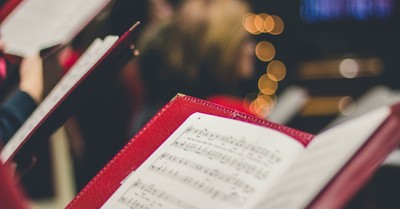Churches with Informal Worship Style Show Growth
- Published Mar 19, 2001

A sweeping study of 41 religious denominations by Hartford Seminary found that churches and synagogues that embrace contemporary worship styles are the most likely to add to their membership rolls, but the transition is usually not without a struggle.
According to the report's findings, half of religious congregations have fewer than 100 "regular participating adults," and 88 percent have fewer than 350; 52 percent of all congregations are in rural areas, with only a quarter in urban areas; and congregational growth has been strongest in the West.
Two-thirds of growing congregations can be found in America's suburbs. In trying to attract younger, non-churchgoers - most often by modifying their worship styles - the congregations experience troubling undercurrents at times. Once a less traditional, more informal worship is adopted, the older members feel at odds with the younger worshipers.
Half of the megachurches - those with 1,000 or more regular participants - have changed their worship style to include musical instruments, such as keyboards, drums and/or electric guitars. Only between 10 and 15 percent of older churches use them, compared with 30 percent of younger congregations.
The Rev. Richard Houseal, research director for the Church of the Nazarene, said the findings present tough choices for churches whose members are aging, but still want to attract new worshipers. "The bottom line," he said, "is that those churches that changed their worship style ... were more likely to have grown."
(The Dallas Morning News; Religion News Service-NY: http://www.dallasnews.com/religion)
According to the report's findings, half of religious congregations have fewer than 100 "regular participating adults," and 88 percent have fewer than 350; 52 percent of all congregations are in rural areas, with only a quarter in urban areas; and congregational growth has been strongest in the West.
Two-thirds of growing congregations can be found in America's suburbs. In trying to attract younger, non-churchgoers - most often by modifying their worship styles - the congregations experience troubling undercurrents at times. Once a less traditional, more informal worship is adopted, the older members feel at odds with the younger worshipers.
Half of the megachurches - those with 1,000 or more regular participants - have changed their worship style to include musical instruments, such as keyboards, drums and/or electric guitars. Only between 10 and 15 percent of older churches use them, compared with 30 percent of younger congregations.
The Rev. Richard Houseal, research director for the Church of the Nazarene, said the findings present tough choices for churches whose members are aging, but still want to attract new worshipers. "The bottom line," he said, "is that those churches that changed their worship style ... were more likely to have grown."
(The Dallas Morning News; Religion News Service-NY: http://www.dallasnews.com/religion)

.jpg)


















